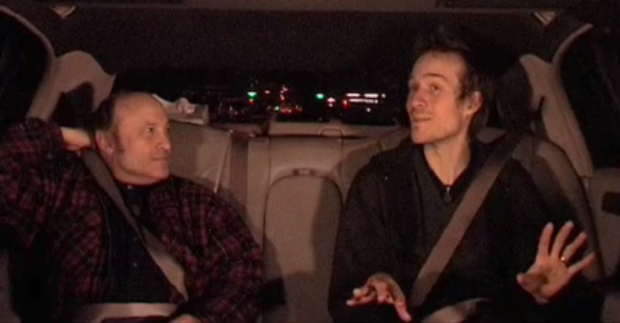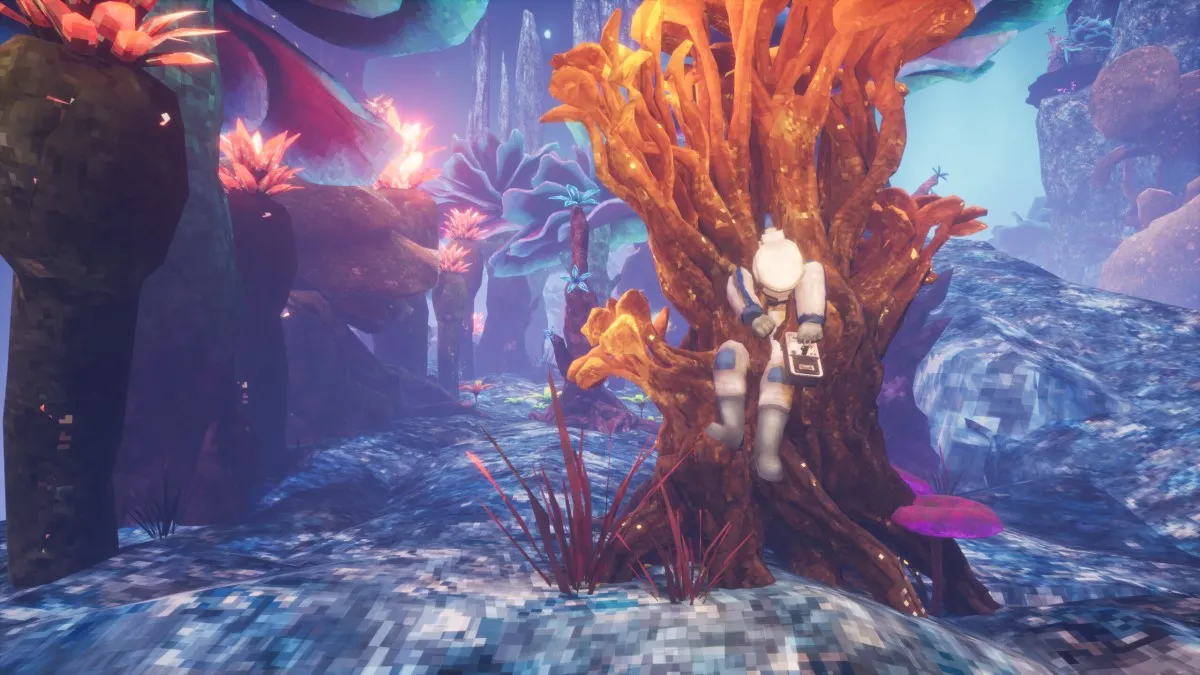Unless I’m sorely mistaken about the number of European readers we get, there’s a pretty good chance you’ve never heard of the European documentary show, “Into the Night With…”
The basic premise is as follows:
– Get two remarkably interesting people to have a conversation with one another
– Film it
In the most recent episode’s case, those interesting people happen to be Chris Crawford, arguably one of the greatest minds in videogame history, and Jason Rohrer, arguably one of the art form’s most interesting rising stars.
Assuming you live in Germany or France and have access to the ARTE channel, you can check out “Into the Night with Chris Crawford and Jason Rohrer” July 2nd at 11:50 pm. If you don’t have ARTE but are halfway decent at getting around Web site region locks, it’ll be available on ARTE’s official site a week after.
If you belong to neither of those groups, but still want to know what you’re missing, hit the jump for my impressions and the first five minutes of the episode.
As alternately enthralling and enlightening as the documentary was, it also made me more pessimistic about the future of games as an at form than I’ve ever been.
Filmed over the course of a day during GDC 2009, Crawford and Rohrer play and discuss PixelJunk Eden, show their games to one another, and talk about the past and future. There’s something subtly epic about seeing Crawford, a man who more or less represented the future of expressive games in the 80’s, talking shop with the man who created Passage — I couldn’t help but feel I was seeing the entire modern history of videogames reflected in their discussions. Crawford came from a time of mammoth instruction manuals and literal, remarkably deep-but-confusing gameplay; Rohrer’s games are immediately intuitive, but seek to express general ideas through metaphor. Both men worked to the elevate of the art form in markedly different ways; if there were ever a meeting of the videogaming minds worth paying attention to, this would be it.
Surrounded by the cacophonous sounds and marketing-heavy atmosphere of the new GDC, Crawford laments that the conference he initially created with a few other designers has since turned into a soulless representation of the industry at large. He sarcastically jokes that his favorite recent GDC talk concerned the technology behind 3D boob physics. They play PixelJunk Eden, an indie game that seemingly represents everything that irritates Crawford about the Independent Games Festival: “I didn’t like it at all…it’s just a variation on the same old hand-eye coordination, you know, let’s — ‘can you twiddle your fingers fast enough to make cute things happen on the screen’…so what?” One gets the feeling that these guys are really trying to accomplish something new and explore the expressiveness of games, but, surrounded by an ironic perversion of the conference Crawford once created, they seem completely alone.
Perhaps that’s what makes the documentary so frequently crushing. These are two of the most relevant guys in all of game design, yet they admit — with alarming regularity — that they might not know what they’re doing. Rohrer claims to have hit a wall with his metaphorical game designs. After we are shown short clip from the very end of his dragon speech, Crawford admits that his entire livelihood rests on the success of Storytron, an interactive storytelling system that immediately appears to be too ambitious for its own good.
Both are struggling with nearly identical problems: am I doing the right thing? Is there any value to what I’m trying to accomplish? Crawford never tamed the dragon of interactive storytelling, and though Rohrer is a relatively fresh face on the gaming scene it’s impossible not to wonder if he’ll end up in the same place (especially since he later voices his desire to explore the same interactive storytelling idea as Crawford, which Crawford immediately advises against).
The two explore what appears to be a decommissioned naval boat as Crawford discusses his history as a designer. As someone who didn’t get into gaming until the late SNES era, Crawford’s Balance of Power, with its world map and seemingly endless menu windows, seemed almost alien to me. And maybe that’s the point. Whatever depths of gameplay Crawford once plumbed, the entire industry since moved in the complete opposite direction, spurred onward by the success of Wolfenstein and Doom. Apart from the work of Rohrer and his contemporaries, Crawford laments that he hasn’t seen anything new in the last decade — even The Sims was preceded by an Activision game called Little Computer People.
As they talk over dinner and eventually return to a closed Moscone Center at the documentary’s conclusion, the two discuss a games industry that has gone in the wrong direction, focused on technology and spectacle rather than expressiveness or humanity. These two guys, and the schools of thought they represent, seem to be the gaming world’s only hope for fighting against an onslaught of chainsaw guns and bouncing, 3D boobs.
Yet, nothing is solved. There is no catharsis. The documentary doesn’t end with Rohrer talking excitedly about some new design idea he’s got that will change the way we think about interactivity. Crawford doesn’t announce that Storytron has become a smash hit among the casual game market. We are left with a young designer who seems to have no clue regarding what to do next (Rohrer’s admission of uncertainty is made slightly more disappointing when one considers he recently had to take an advertising job), and an old legend whose entire livelihood rests on an invention that seems doomed to fail.
Perhaps the men will one day tame their respective dragons, but Into the Night with Chris Crawford and Jason Rohrer made me feel unreasonably hopeless about the games industry for days after I watched it.
It’s a remarkably well-made documentary — the conversations flow together very nicely, the cinematography is great, and the hands of the editor or director are all but invisible, putting almost sole focus on the subjects — but it’s also filled with the crushing life realizations that result when two incredibly intelligent people are totally, frighteningly honest with one another.




